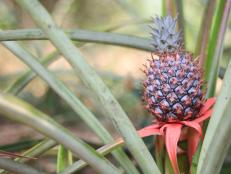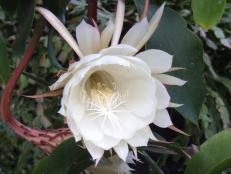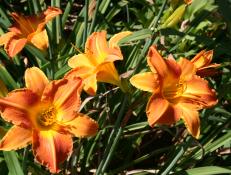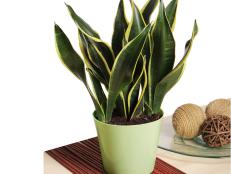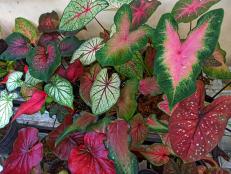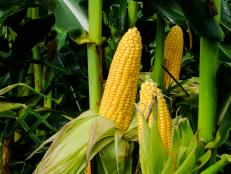How to Grow and Care for Sago Palm
Our garden experts offer sago palm planting, growing and care tips for this ancient plant.
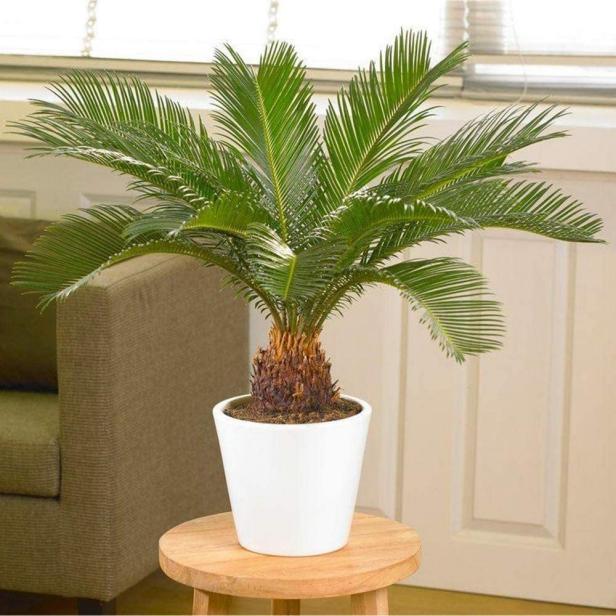
Slow-growing king sago palms (Cycas revoluta) take a few years to mature at 2' to 3' tall. Queen sago palms (C. rumphii), while also slow-growing, are taller, more tree-like plants.

Although their stiff fronds and thick, shaggy trunks resemble palm trees, sago palms are actually Cycads, relatives of conifers. They're ancient plants, dating back some 200 million years.
There are about 40 species in the genus, but the slow-growing king sago palm, C. revoluta, also called the common sago palm, is the most popular. Because container-grown plants typically grow just one or two inches a year, they make good houseplants. Queen sago palms, C. rumphii, are bigger but equally slow-growing, taking up to 50 years to mature at 6 to 10 or 12 feet tall.
Sago palms are hardy in USDA Zones 8 to 10. They can be moved outdoors when the weather is reliably warm but should be brought back in before the fall or winter temperatures drop to 50 degrees.
About Sago Palm
Common Name: Sago palm
Plant Type: Cycad, perennial
Hardiness Zone: 8 - 10
Family: Cycadaceae
Native range: Southern Japan
Size: 3 to 10 feet tall and wide
Special Features: Glossy, green, palm-like foliage
Water: Medium, drought tolerant
Soil: Sandy soil mixed with good compost, well-draining
Light: Bright, indirect
Maintenance: Low
Toxicity: All parts are poisonous; use caution if you grow them around pets or children
Uses: Houseplant, rock gardens or as a patio plant.
How to Grow Sago Palms
Indoors
Sago palms are beautiful but toxic, so use caution if you grow them around pets or children. To avoid contact with your skin, wear gloves when handling or pruning them.
Sagos are low-maintenance, drought-tolerant plants with glossy, green foliage. They like bright, indirect light, warm temperatures and a humid environment. Indoor plants should be kept out of drafts and away from heating or cooling vents. Mist them regularly, use a humidifier or group them with other houseplants to help increase the surrounding humidity.
Plant your sago palm in well-draining potting soil mixed with organic matter. Keep the soil consistently moist in the spring and summer. In the winter, let it dry out between waterings and reduce the amount of water you apply. Fertilize during the growing season with a slow-release fertilizer with micronutrients designed for palms.
Sago palms grow very slowly, so you may get only one set of new fronds each year, if that often. The new leaves are soft and usually bronze-colored, becoming more rigid and green as they mature. You will probably need to repot only once every three years or so, but it's a good idea to refresh the potting soil in your plant's container every spring.
These plants can be male or female. After they mature (usually around 15 to 20 years old), males produce long, thick, golden cones every two or three years. The cones can be removed or left to mature and open their scales naturally. When females mature, they "flower," or produce large, round structures that cover their seeds. Eventually, the female flowers open to receive pollen and the male cones release pollen and viable seeds develop.
Outdoors
Although they're tropicals that can take full sun, sago palms grown outdoors need part shade to prevent their leaves from burning. They also need soil that drains easily, yet not too fast. Moderately sandy soil mixed with good compost will retain some moisture, but won't stay overly soggy and cause the roots to rot.
Sago palms grow best in temperatures that range from 65 to 75 degrees Fahrenheit. Once the fronds become about a foot long, they begin to arch over.
Outdoor sago palms should be watered when the soil begins to dry out, or about once a week if there's not at least an inch of rainfall. Once they're established, the plants can tolerate drought and don't need regular waterings.
Fertilize outdoor sago palms every spring with a balanced, slow-release fertilizer, such as a 10-10-10. Follow the package directions for how much to apply. Like plants grown indoors, outdoor sago palms are seldom bothered by pests or diseases other than fungal root rot, which results from overwatering.
How to Propagate Sago Palms
Because sago palms grow slowly, most gardeners don't start their plants from seeds. Instead, they pot up the pups — individual suckers that grow around the base of the plants. Use a sharp, sterile knife to cut the pups away from the parent. (You may have to work the knife back and forth to cut through the roots or use a trowel to pry the pup away.) Remember to wear gloves to protect your hands, since the plants are poisonous and cause allergic reactions in some people.
Remove any roots on the pup and cut off all but two leaves. Put the pup in a cool, dry spot out of the sun for a couple of days, so the cut end can form a callous. Then dust the cut end with rooting hormone to encourage new roots to form and plant the pup, cut end down, in a pot not much bigger than the pup itself. Use a mixture of half potting soil and half sand, or if you prefer, a soil mix made for cacti and succulents.
Place the pot in a warm, bright spot, out of direct sunlight, and keep the soil barely moist. Leaf buds and/or surface roots will appear, although they can take anywhere from a few weeks to a few months to form.
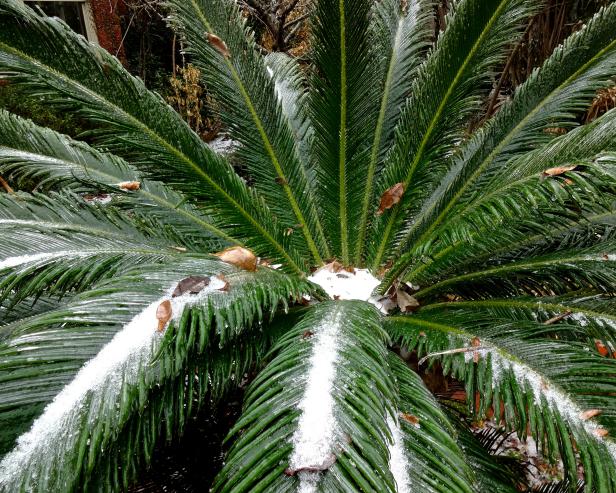
Image courtesy of Real Palm Trees
Sago Palm Pests and Diseases
White scale are a common problem on sago palms. These small insect pests have waxy, white or yellowish shells and damage or kill plants by sucking their juices. If your plant has any heavily infested fronds, remove and discard them. Then treat the plant by spraying it with neem oil or a horticultural oil labeled for white scale. Some gardeners prefer to drench the soil with a systemic insecticide. Always follow the product directions and be prepared to treat the plant again if the pests persist or return.
Sometimes the bumps or dots that appear on sago palms are not white scale insects, but a natural condition called scurf. Scurf, which doesn't harm the plants, can be left to fall off naturally when the fronds mature.
Mealybugs, which are also sucking insects, are another common pest found on sago palms. They look like fuzzy or cottony masses on stems and leaves. Use an insecticidal spray or a systemic insecticide designed to control them.
While these ancient plants are seldom bothered by diseases, root rot or crown rot can occur. Rotting is caused by a fungus in wet soils that inhibits the plant's ability to take up nutrients and water. It can cause leaves to turn yellow and trunks and roots to become soft. If rotting occurs, replace the soil in your plant's container with fresh soil that drains easily and cut out any soft or rotten plant parts. Use a fungicide designed for Cycads to keep the rot from getting worse.
Companion Plants for Sago Palms
Sago palms are attractive houseplants, and they make beautiful additions to outdoor gardens in warm winter areas. For best results, use outdoor companion plants that have the same basic needs for light and water, such as true palm trees and succulents. Ground covers that are also hardy in Zones 9 and 10 can help fill in around them. Taller shrubs like crepe myrtles make a good background for sago palms, while short flowers like cannas can color to beds and borders.







